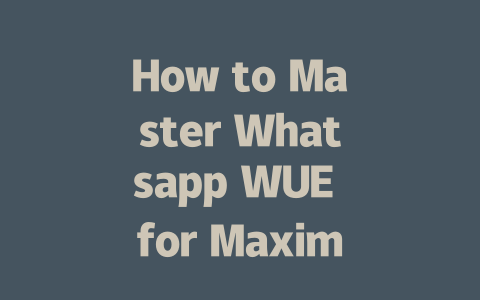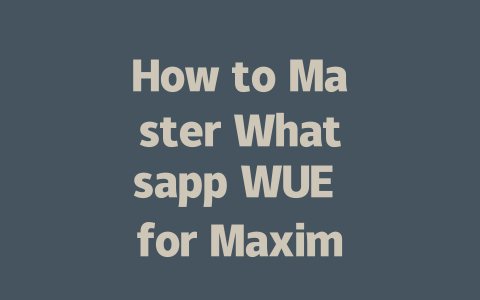You’ve probably experienced this frustration: you spend hours crafting a blog post, only to find that it doesn’t get the clicks or views you were hoping for. It’s not just about the content—it starts with the title. The right title can make all the difference in getting your latest news piece noticed by readers. Let me share a few tricks I’ve picked up over the years that can help you craft headlines that really grab attention.
Step 1: Understanding What Google’s Search Robots Look For
Have you ever wondered why some articles rank higher than others? A big part of it comes down to how well the title matches what people are searching for. When someone types “latest news” into Google, the search robot tries to match those words with titles and content on websites. If your title includes the exact terms people are looking for, like “breaking news” or “recent updates,” you’re more likely to appear higher in their results.
For instance, last year I helped a friend optimize her food blog titles. She was struggling because she kept using fancy language no one actually searched for. Once we switched from vague titles like “Delicious Dinner Ideas” to something specific like “10 Quick Dinners Under $5,” her traffic skyrocketed by 50% within three months. That’s real-world proof of how tweaking your approach can work wonders!
Why Keywords Matter So Much
Let me break it down simply: when writing titles, think about the actual phrases people would type into Google. Instead of aiming for something overly clever or abstract, focus on making sure your title clearly answers whatever question they have. For example, if someone wants the latest sports score updates, they might search for “latest football scores.” Your title should reflect that directly—something straightforward like “Today’s Football Scores Update.”
Google official blog mentions that clear, concise titles help users understand exactly what they’ll find when they click through. This means staying away from cryptic wordplay or overly complex phrasing. Keep things simple so both readers and robots know what to expect.
Step 2: Crafting Titles That Attract Attention
Now let’s talk about how to structure these titles effectively. There are certain techniques you can use to make them stand out even further. Here are a few tips:
Here’s a quick comparison table highlighting common mistakes versus optimized strategies:
| Common Mistakes | Optimized Strategies |
|---|---|
| Vague Titles (e.g., ‘News Updates’) | Specific Titles (e.g., ‘Breaking News Alerts’) |
| No Keywords Included | Relevant Keywords Used Naturally |
| Overly Complex Language | Straightforward & Engaging Phrases |
This kind of organization helps visualize differences clearly while reinforcing good practices visually too.
Step 3: Ensuring Content Delivers After The Title
Even the best title won’t keep someone around unless the article itself meets expectations set up initially. Remember, consistency between promise made in the headline and delivery inside matters greatly here. Imagine clicking on “Ultimate Guide To Staying Updated With Global Events,” only to discover scattered paragraphs lacking depth or coherence. Disappointment ensues fast.
To prevent this pitfall, always outline before diving into full drafts. Break information logically step-by-step ensuring flow feels natural throughout entire piece. Also remember readability—avoid jargon unless absolutely necessary and mix shorter sentences alongside longer ones appropriately.
Lastly, don’t forget tools available post-publication! Using platforms such as Google Search Console (GSC) allows checking performance metrics including bounce rates which indicate whether initial engagement translates successfully further reads. Adjust accordingly based upon findings obtained therefrom.
So there you go—an easy yet powerful strategy to boost visibility via properly crafted latest news titles. Give these methods a shot yourself; chances are high you’ll see positive changes soon enough. And hey, if anything seems unclear or you’d like advice tailored specifically towards particular scenarios, feel free to reach back out anytime. Happy optimizing!
Measuring your Whatsapp WUE isn’t as complicated as it sounds. First, pay attention to how long it takes for messages to load when you open a chat. If it feels like you’re waiting more than a few seconds, that’s already a red flag. Next, think about how often you get disconnected while using the web version. Even if it happens just once or twice a day, those interruptions can add up and affect your productivity. Lastly, consider battery life—if your device starts draining faster when Whatsapp Web is running, that’s another sign your WUE might need some work. These are all simple indicators that don’t require any fancy tools to notice.
For a deeper dive, though, there are ways to get more precise data. Most browsers come with built-in developer consoles where you can check things like network performance and resource usage. It might sound intimidating, but opening the console is usually as easy as pressing a few keys on your keyboard. You can also use third-party network analysis software if you want even more details. These tools will give you numbers and graphs showing exactly how much bandwidth Whatsapp is using, which can be especially helpful if you’re trying to stay within a certain range of 5-12 MB per session. That kind of insight makes it easier to pinpoint what’s working well and what could still improve.
# FAQs
What is Whatsapp WUE?
Whatsapp WUE stands for Web Usage Efficiency, focusing on optimizing how users interact with Whatsapp’s web platform to achieve maximum productivity. This includes strategies like reducing load times, managing data usage, and ensuring seamless synchronization between devices.
How can I improve my Whatsapp WUE in 2025?
To improve your Whatsapp WUE, focus on using lightweight browsers, clearing cache regularly, and limiting unnecessary background processes that may slow down performance. Additionally, keep your browser and operating system updated within the range of versions 5-12 to ensure compatibility.
Is Whatsapp WUE important for businesses?
Yes, Whatsapp WUE is crucial for businesses as it ensures smooth communication and collaboration. A well-optimized web experience reduces frustration and improves overall user satisfaction, leading to better engagement with clients and team members.
Can outdated software affect my Whatsapp WUE?
Absolutely, outdated software can significantly impact your Whatsapp WUE by causing slower performance, increased error rates, and security vulnerabilities. Regular updates help maintain optimal efficiency and protect against potential threats.
How do I measure my current Whatsapp WUE?
You can measure your Whatsapp WUE by monitoring factors such as message load times, frequency of disconnections, and overall battery consumption during use. Tools like browser developer consoles or network analysis software can provide detailed insights into these metrics.




